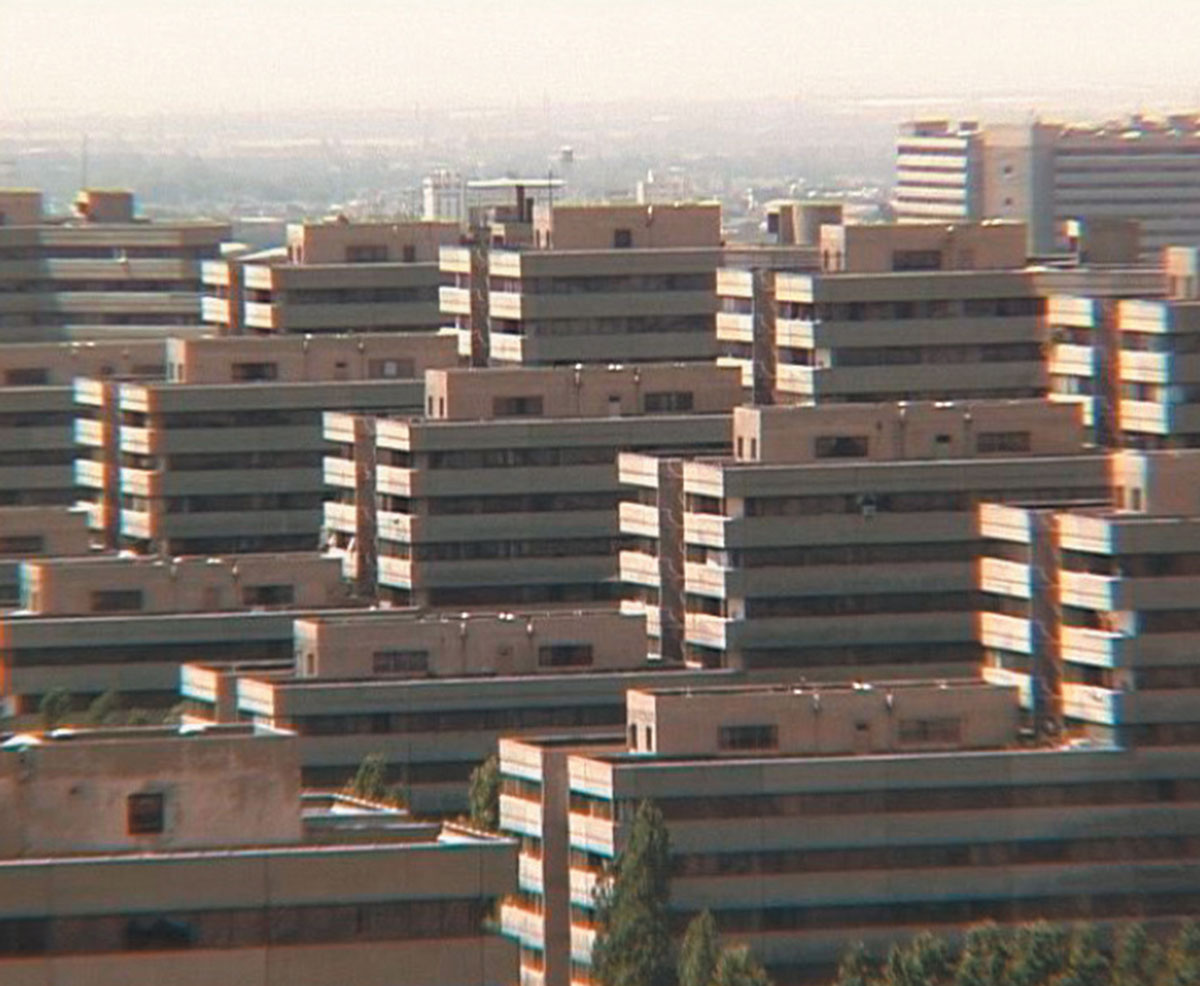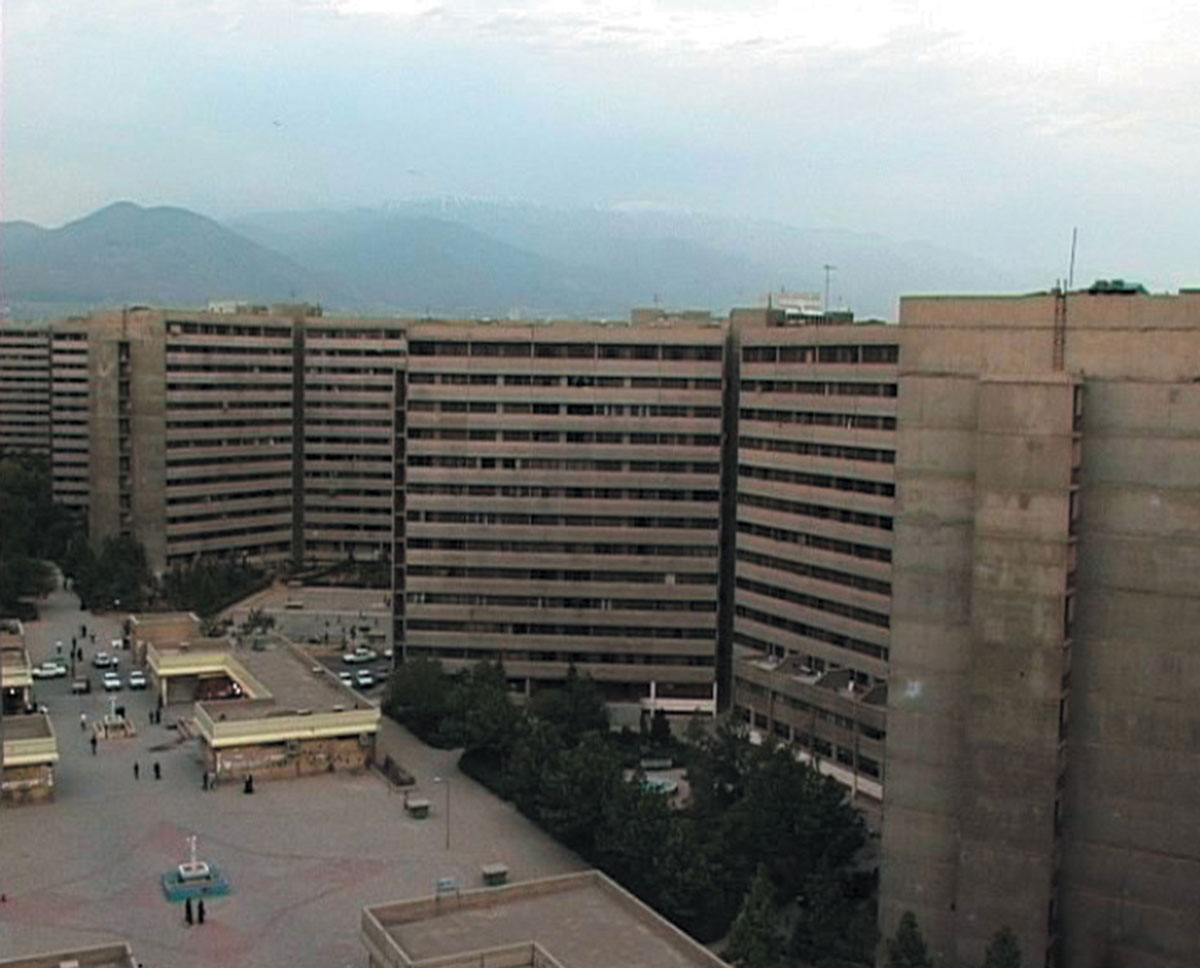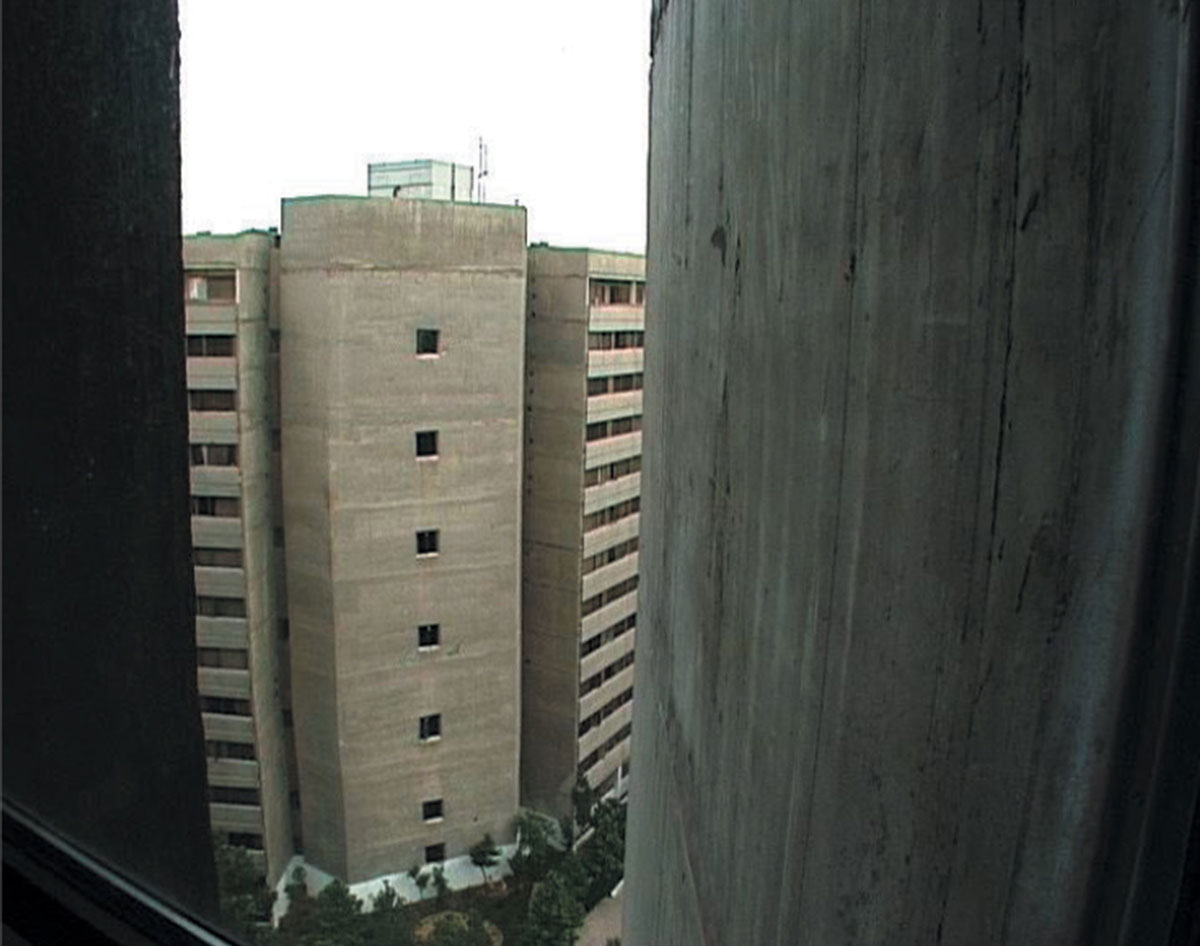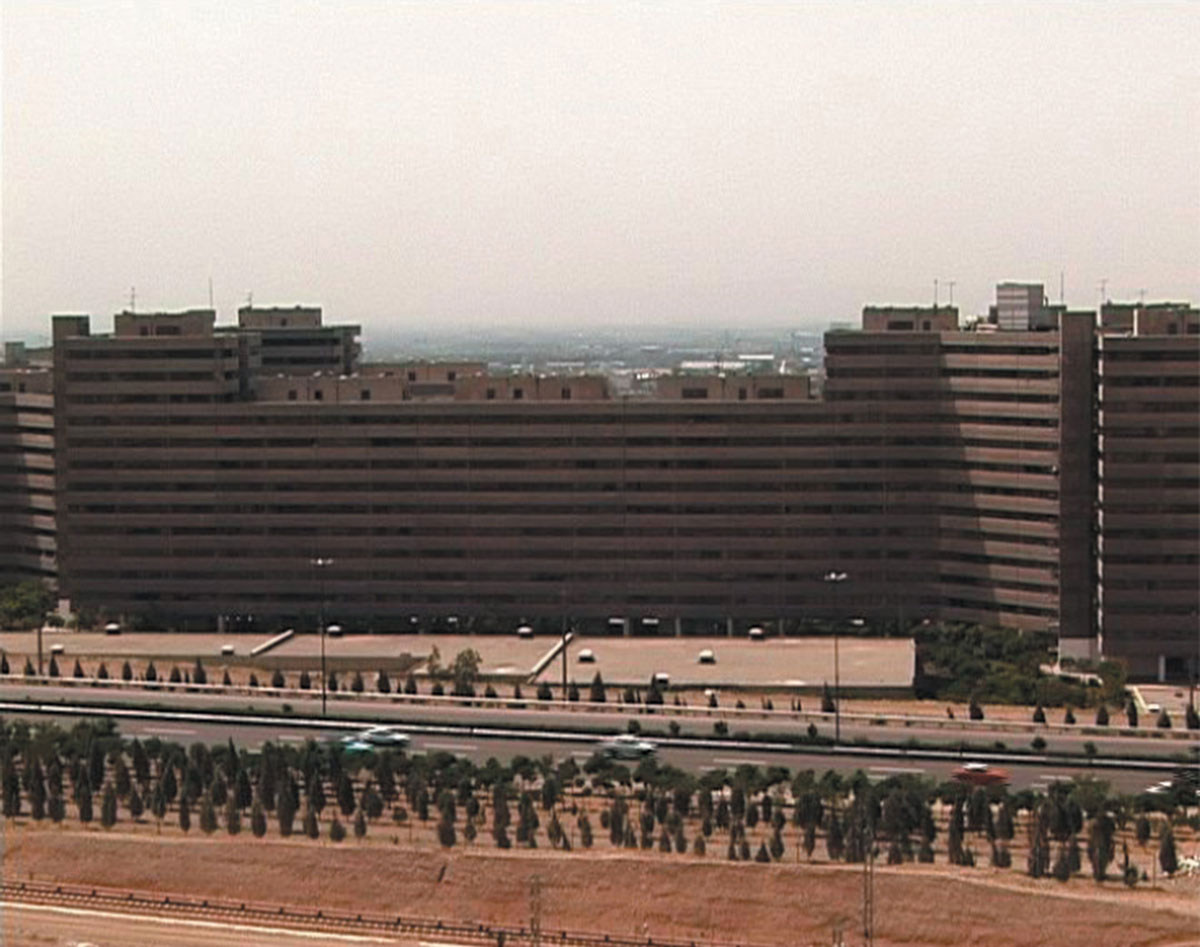El Pueblo Unido
Architecture and revolution in Tehran
Tirdad Zolghadr
The term “revolution” has its own connotations in Iran. If most of the West hasn’t seen one in centuries, depending on how you define a political revolution, Iran has endured up to four of them in the 20th century alone—popular and top-down, secular and religious, violent and non-violent, in various combinations. Unfortunately, none of them worked themselves out all the way, at least not in the sense of people leaning back and saying “Oh, that was well worth it, good stuff, let’s celebrate at the new Mexican place, and I’ll finally wear those cufflinks you got me for my birthday.” Perhaps this is precisely why, to this day, the current regime won’t stop insisting on how “revolutionary” it continues to be. The Revolutionary Leadership, The Revolutionary Guards, The Revolutionary Court, Revolution Square, Revolution Avenue—on and on and on.
Needless to say, the Iranian establishment is about as revolutionary as a Che Guevara T-shirt in a tourist shop in Carnaby Street, or the recent demonstrations in Seattle and Genoa—as quaintly theatrical as it is thoroughly middle class. But this, I’d say, is the ruse. The very idea of a revolution has been laden with such musty, hackneyed connotations, that no reasonable Iranian adolescent would dream of letting out his oedipal fury on the State. Reformism, though running out of steam, is still widely considered the more effective option.
What we need most, student leaders have been quoted as saying, is not the sound and the fury of yet another government overthrow, but a new and resolutely democratic public discourse. In other words, you don’t need self-styled guerrillas throwing eggs and light bulbs at abandoned police cars to have a revolution. As it happens, all over the world, observant, soft-spoken political science professors in dark green Burberry overcoats and John Lennon spectacles are now insisting that a revolution is “any change in the rules on how rules are changed”. At times, a very long-term, meandering, fatuous affair.
The most awkward revolution in the history of Iran was arguably the modernisation program announced by the Shah in 1962, a blend of political cosmetics, sweet intentions, and ferocious authoritarianism known as the “White Revolution.” It would take too long to discuss the program’s revolutionary credentials in detail; suffice to say that its most fundamental, and as it were, revolutionary contribution was to initiate the now 40-year tradition of rampant urbanisation in Iran, with cities quadrupling every other decade or so.
With this came a flood of modern architecture, mostly careless, quick-cash renditions of the International Style, although some, such as the Ekbatan housing project, were meticulously planned. Ekbatan is an enormous assemblage of right angles, functional voids, and horizontal strips of glass and concrete, the stuff people refer to as “Stalinist” (although Stalin actually preferred gigantic wedding-cake architecture, full of playful squiggles and pointed turrets). It was designed in the mid-1970s, at the peak of the hysterical optimism of the Shahist era, and built in record time. While the nearby airport was constructed at a rate of 150 cubic meters of concrete a day, in Ekbatan, the daily rate was up to 1500 cubic meters. With just under 80,000 tenants, it’s the largest housing estate in the Middle East, and once Tehranis from across the city’s middle class started moving in, its sheer volume affected the rents throughout all of Tehran.


Rumor has it that if you look at the building complex from above, you’ll see “Long Live the Shah” spelled out in Farsi calligraphy, which, though unsubstantiated, is pertinent enough in a round-about, sardonic sort of way. Ekbatan was conceived as a city at the end of history, masterminded by a heroic and groundbreaking elite, sealing the happy, irreversible triumph of progress over traditionalism. People won’t like it, they snickered over their dry martinis, but they’ll just have to get used to it.
Colossal slabs with messianic pretensions, standing around in the middle of nowhere—at the risk of sounding misanthropic, I think it’s a shame they don’t make them any more. As one particularly sentimental friend of mine would put it (an Islamic scholar living in Bangkok), Ekbatan is a monument: not to the genius of a generation of urban planners, but to the Dawn of Irony. Ever since 1979, year of the Islamic revolution and the beginning of the end of orthodox Modernism—both in Tehran and abroad—no ideological agenda can afford the luxury of such pure and simple good faith, of such earnest socio-revolutionary promise.
Many have pointed out that the Islamic Republic is not only as revolutionary in discourse, but also just as technophile, authoritarian, and notoriously short-sighted as what preceded it. But with the economy in ruins, and oil prices being a fraction of what they were in the 1970s, it is forced to be more shrewd, populist, and open to compromise. If we look at, say, the Navvab housing project built in the 1990s in south Tehran, we see an eight-lane motorway ploughed through the middle of an old, traditional neighborhood. Alongside the murderously busy street, we have apartment buildings in happy colors and varying shapes and sizes. The building project is 5 km long, but is surprisingly thin, a facade that serves to hide the older parts of Tehran. The motorway in question leads from the new airport to the city center, and, thanks to the apartment blocks, newcomers can enjoy the view of a sprightly, contemporary city.
Tehran’s new office blocks and government buildings are similar in temperament: off-hand postmodernism at its most horrendous, complete with mirrored glass, Roman pillars, and pseudo-historical quotations of pseudo-Islamic architecture. As for private households, most look like painstakingly arranged baroque furniture showrooms, full of flamboyant loops and curves. Very often, the sofa still sports the original plastic wrapping. The latter, however, is more than just an exclusive mark of social standing, and deserves a closer look. If in Iran, there are many common denominators that cut through religion, class, gender and ethnicity—like, for example, classical poetry, agonizing love ballads, and any type of junk food soaked in sweet ketchup—even these are subject to styles, interpretations, and modes of consumption that differ from one another. One of the few phenomena that truly do unite the proud people of Iran as a whole, is the fascination for rococo armchairs with crimson paddings, and gold trimmings shaped into teeny-tiny crests and purls, leaves and feathers. In Iran, more is more. Even in Ekbatan, nearly every apartment I’ve seen is a cross between Ziggy Stardust and Louis XV.
Hossein is a translator and long-time tenant in Ekbatan. On his coffee table is a small, light blue ceramic canoe, filled with porcelain apples, peaches and pears. I’m visiting Hossein with a colleague, an architect and filmmaker named Solmaz Shahbazi. I ask Hossein how people feel about Ekbatan, being the uncompromising modernist wet dream that it is. He chuckles happily to himself. “You’ll generally find many contradictions between private habits and public design in Iran. According to Foucault and other thinkers, what happened with the Islamic revolution was a postmodern movement. So a project such as Ekbatan would be out of place here. An experiment that took place in the wrong context.”
When Tehranis speak of Ekbatan, they inevitably roll their eyes, click their tongues, and waggle their heads as they bemoan the poor souls holed up in “little matchboxes,” in that concrete dungeon of drugs and teenage suicides. It’s especially the suicides you hear about. Even France Info did a piece on teenagers throwing themselves off the rooftops of Ekbatan. You’d think you have to watch your head every time you turn a corner.
Hossein’s mood changes when you mention the suicides. He sighs impatiently. “Look. Take a small, traditional neighborhood. Even if several kids throw themselves out of their bedroom windows on one and the same day, nobody will say it’s because of the area. But in Ekbatan, tens of thousands of people live in a space that is seen as one single entity. And if you take a bigger population, obviously you will find more human tragedies.” Surely enough, whether in Iran or elsewhere, it’s easier to blame misery and crime on slabs of concrete, than on traditional Iranian courtyards with little goldfish wiggling about in little garden ponds. What makes things confusing here is that there are no official figures to refer to (as in most cases regarding the population of Tehran).
As a matter of fact, Hossein’s dogged defence of his neighborhood is typical, the project being one of the only parts of the capital where people share a common sense of identity. Tenants are quick to point out they feel safer and more relaxed in Ekbatan—which is completely autarchic, offering everything from internet cafes to medical centers to fitness clubs to shopping malls—and insist on how much easier it is to make social contacts. The latter is what makes the project so interesting for political scientists. “What we have here,” they say, “is a remarkable example of the urbanisation of consciousness in Iran, and the re-inscription of the concept of a modern civil society as we know it. Note that in Ekbatan, inhabitants are from completely different backgrounds, but rather than living in separated parts of town, they share a single space, and are actually forced to get along with one another. Gradually, a common discursive practice emerges that does not bear itself as a grand narrative, but sets itself apart from the grands discours of both High Modernism and the Islamic Republic”. That’s if they’re the Anglo-American, Cultural Studies types, with light brown Manhattan Portage backpacks. If they’re French, they’ll run around making diagrams and surveys on “Heroin and Unemployment in the Ghetto Wastelands of West Tehran”, then publish it in the Monde Diplomatique, with an illustration by Edvard Munch.
What is crucial here is that, according to the municipality, a third of Tehran is 14 years old or younger. In other words, perhaps half the city’s residents are minors, knowing neither life under the Shah, nor the revolution, and presumably sharing a very different set of values and priorities. Some political scientists have even scheduled an Iranian “May ‘68” movement for 2010 or thereabouts.
Manijeh and Hojjat are art students in their late teens using a first-floor Ekbatan apartment as an atelier. Manijeh wears thumbrings, noserings, ankle bracelets, and a white shirt with questionably obvious paint stains, in flaming red and fiery orange. Her boyfriend sports the fashionable dervish look—a full, thick beard, straight hair down his shoulders, and a doe-eyed gaze of dreamy innocence. He looks terrifyingly dull, and I avoid getting into a conversation with him. But they’re both very friendly and talkative, especially Manijeh, who holds agitated speeches on the cowardice of all the hundreds of thousands of Iranians trying to emigrate to the West, followed by sermons on the virtues of sticking to your hometown, no matter what. Later, after several glasses of chaii, I’m horrified as Hojjat threatens to play us some Simon and Garfunkel on his guitar, but he changes his mind, and plays a tape instead.
Together, we visit one of the many Ekbatan youth clubs, to witness a popular debating session that is held every Wednesday. This week’s subject is “Sexual Discrimination.” The room is packed with nervous teenagers, precisely half of which are girls. A small, perky, and incredibly well-read 14 year-old is hosting the debate, and is trying to steer the discussion towards his pet theories on sexual constructivism and social performance. But only a handful of participants are willing to hear him out, let alone agree with him. “Of course you need equal rights and stuff,” they artfully concede, “but in the end, there are, like, natural values, and, you know, masculine and feminine traits, and that’s the way it’s got to be.” After half an hour or so, I turn to see how Hojjat and Manijeh are taking the shouts and hot-headed monologues erupting around us, only to find their seats empty.
I feel lonely and abandoned, and make my way outside to hail a cab and get back home. The driver looks a lot like Hojjat. As we inch our way through rush hour traffic, we share a pack of cigarettes, and listen to a tape recording of Carlos Santana, live in Brussels.


I’m intrigued, and eager to meet these angry young men who refuse to comply with the peaceful rules of the petri dish community that make Ekbatan so special. And indeed, there’s nothing easier than dropping by to have a friendly chat with the militia. Their Ekbatan headquarters are in a conventional, one-story house, a smallish, discrete sort of bungalow in the middle of an open space left over between two particularly large clusters of concrete slabs. There it sits, in the center of Ekbatan, but clearly set off from the rest in an unmistakable architectural counterstatement. As Ms. Shahbazi and I approach the front door, we pass through ever larger swarms of young men with fluffy beards and bad skin. We ask to see the officer in charge, and are led down a long, dark hallway, with bassijis floating in and out of the many rooms on either side, until we finally reach an office where we’re offered a seat next to a chubby fellow in civil clothing negotiating the purchase of a Nissan pickup.
With its neon lighting, and pictures of Ayatollahs Khomeini and Khamenei, the room is very much like any other government-affiliated office in the country. No baroque swirls or rococo ruffles here; only a golden clock on the wall, shaped like a baby owl flapping its wings. When the car dealer is finally gone, the officer pours us some chaii, and we gradually pick up a conversation on Ekbatan, living traditions, and so forth. He’s surprisingly friendly, and perhaps I could even learn to relax in his presence, if I only took the time.
“I wouldn’t let my daughter grow up in a house over two stories high,” he quips. I expect him to start complaining about the anonymity that characterizes life in Ekbatan—for one thing, the sheer size, the pilotis and the adjoining rooftops allow you to move unnoticed from block to block, and for another, unmarried couples, single mothers and other social misfits can live their lives without drawing much attention to themselves. But personal liberties, though highly debatable—“Ekbatan isn’t Europe,” he says “and it isn’t the USA. This is Iran, with its own set of rules: it would be better if people simply didn’t want the freedoms they want”—are not the only issue. “The problem with high-rises, you see, is that Islam explicitly disapproves of architecture that offers a view into your neighbor’s private space,” he continues. Moreover, the very composition of Ekbatan has an unsettling, psychedelic effect on people. “The fabric and the structure—it’s all very confusing. If you take a look at the underground parking lots, you’ll see how tricky it is. It looks like something straight out of an American movie.” The man is clearly upset, and we politely thank him for his time, leaving him staring thoughtfully at his owl. To be fair, as it later turns out, the officer is far from representative for his milieu. We soon meet woman members of the militia who are simply thrilled about Ekbatan, raving on about how much easier it is to make friends, and applauding the soundproof windows.
We walk out of the bungalow into the fresh evening air, and make for the nearest taxi stand, where we notice people standing around talking in hushed voices. A teenager who flunked her exams just threw herself off the roof of block 2B. Did we want to take a look? We decline. We have an appointment with the vice-president of the “Ekbatan Globetrotter’s Club.”
Sitting in the taxi, I try very hard not to think about the teenager from 2B.
I remember a pamphlet from the 1930s, printed by the hardcore modernists CIAM, the Congrès international d’architecture moderne, with the catchy title “Can Our Cities Survive?” I try to picture the lot of them, with their tweed jackets and immaculate side partings, sipping hot tea with the bassijis, patiently explaining the pending liberation of humanity from the chaotic, labyrinthine weight of history via the pure rhythms of the sublime habitation-machine, and its promise of a new age for mankind.
The sun is slowly setting over the enormous outline of Blocks 16 to 26. The driver shifts into second gear, rolls up his window and smiles, for no apparent reason.
The above essay is based on research conducted during 2001 for the documentary film Tehran 1380.
Tirdad Zolghadr is documentary filmmaker and writer based in Tehran.
Spotted an error? Email us at corrections at cabinetmagazine dot org.
If you’ve enjoyed the free articles that we offer on our site, please consider subscribing to our nonprofit magazine. You get twelve online issues and unlimited access to all our archives.